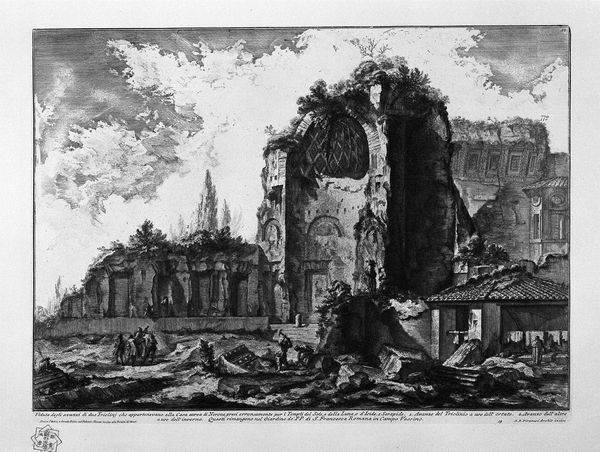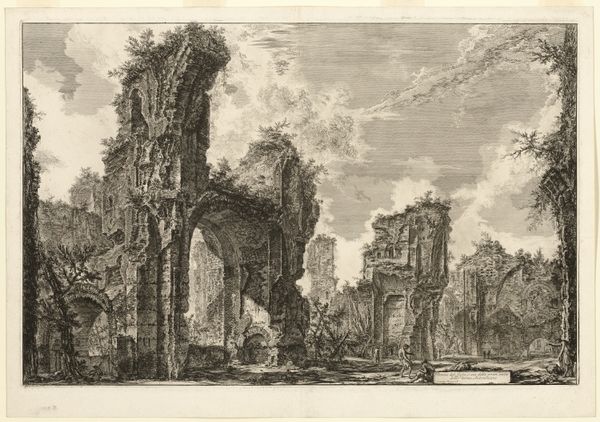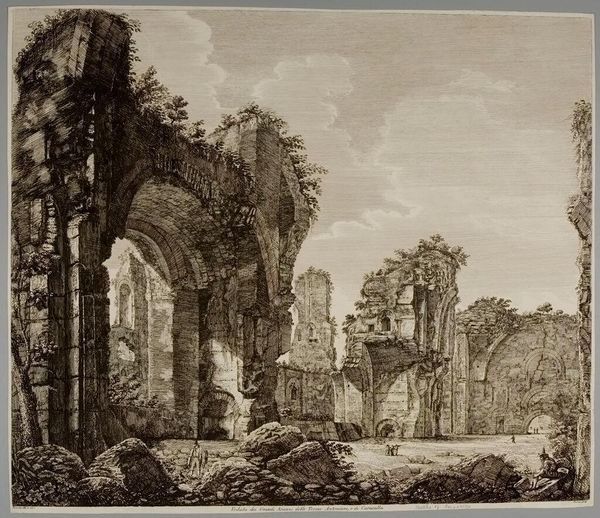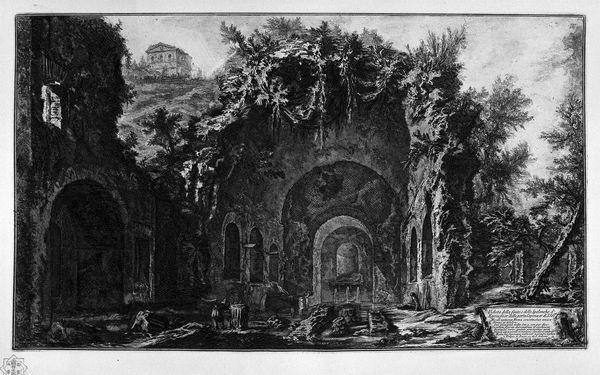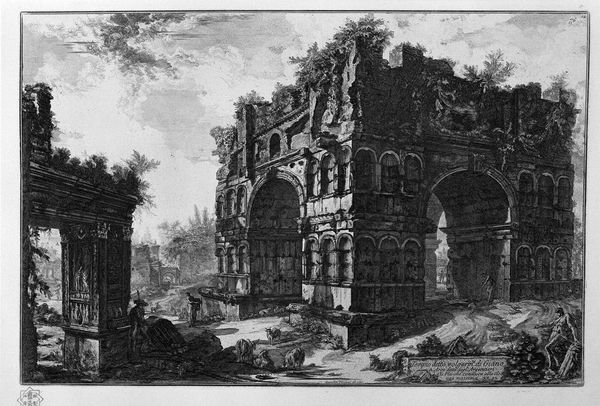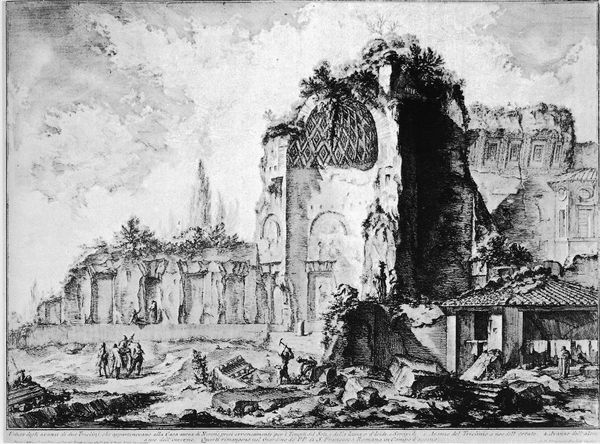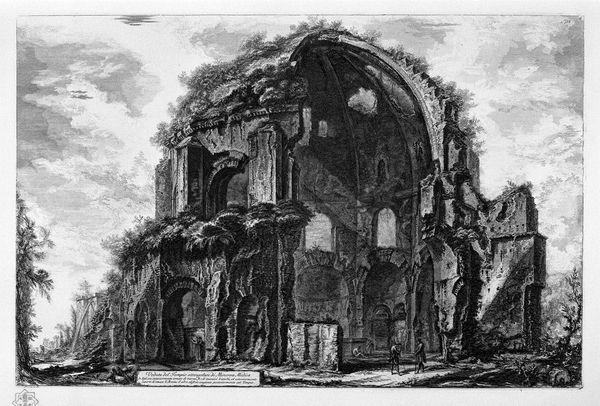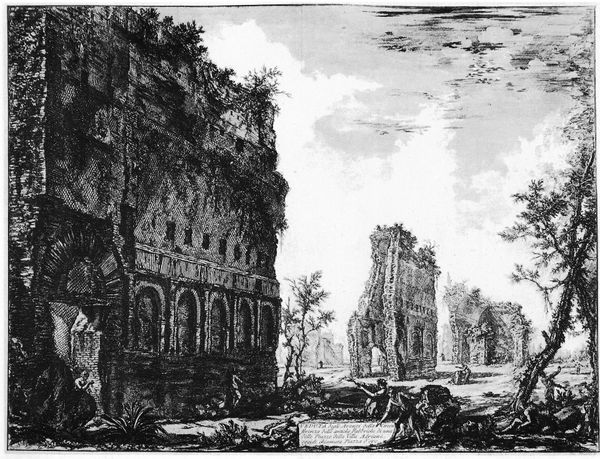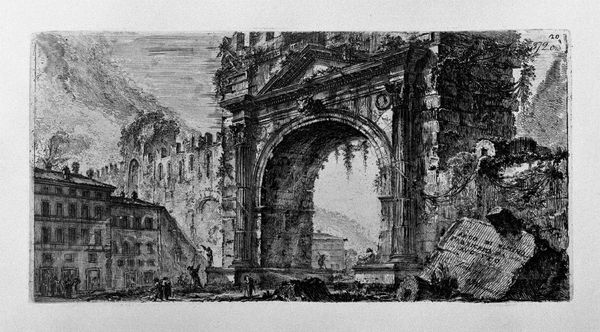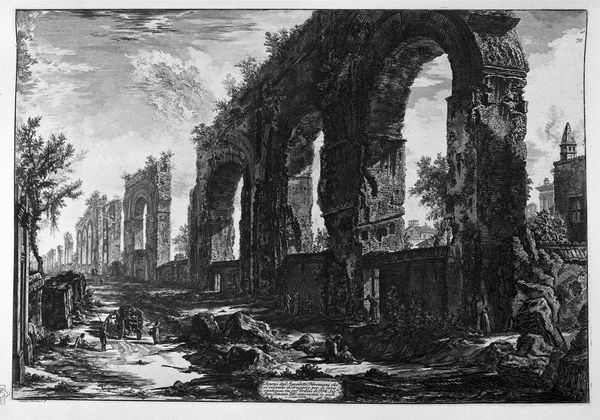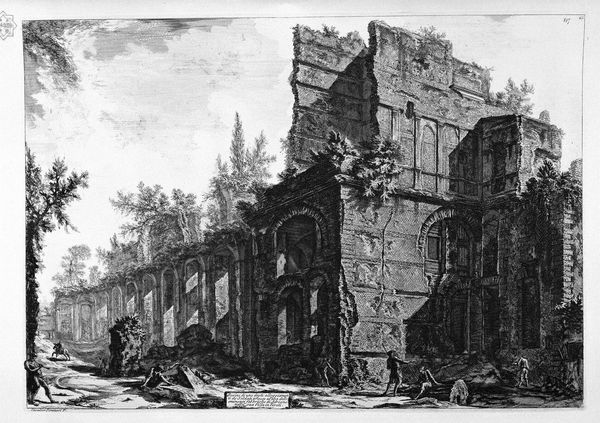
print, etching, architecture
# print
#
etching
#
landscape
#
romanesque
#
romanticism
#
history-painting
#
architecture
Copyright: Public domain
Editor: This print, “Ruins of Sixtus, or both of the great hall of the Antonine Baths,” by Giovanni Battista Piranesi, rendered using etching, depicts the ruins of a once-grand structure overtaken by nature. The scale feels immense. What strikes me is the tension between the decay and the persistent growth. What do you see when you look at this piece? Curator: For me, this work speaks volumes about labor and the transformation of materials. Consider the Antonine Baths – the immense human effort required to extract, transport, and shape those stones, originally intended for civic bathing and social interaction. And now, observe how those crafted materials crumble and are being reabsorbed by the very earth from which they came. The printmaking process itself – the labor of etching the copper plate, the inking, the pressing – echoes that cycle of creation and eventual decay. Do you notice how Piranesi's technique itself reinforces that theme? Editor: Yes, the intricate lines almost mimic the texture of crumbling stone and overgrown foliage. It's as if the very act of creating the print mirrors the processes of building up and breaking down. Is he perhaps making a comment about the impermanence of human endeavors? Curator: Precisely! The print serves as a powerful meditation on the relationship between human ambition and the relentless forces of nature, reminding us that even the most impressive feats of engineering and construction are subject to the slow, persistent work of entropy and the earth's reclaiming hand. He also is subtly nodding to the contemporary taste for ruins at the time. People consumed images of ruins and wanted to experience it. This makes Piranesi an entrepreneurial and gifted individual, very involved with contemporary society. Editor: That's fascinating. I hadn't considered the print itself as another layer of labor and material transformation contributing to the overall meaning. Thank you. Curator: And thank you for bringing such fresh insight to the materiality of this decaying structure. I see how crucial is to address that even images can be considered under their material production.
Comments
No comments
Be the first to comment and join the conversation on the ultimate creative platform.
